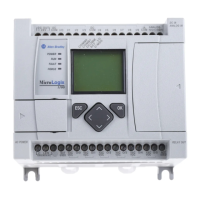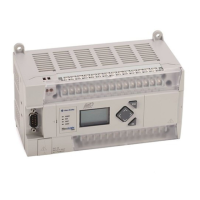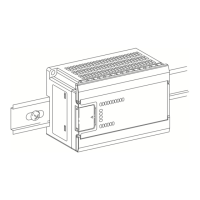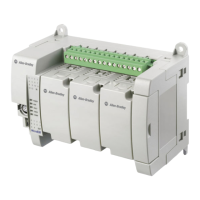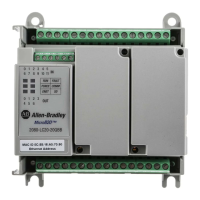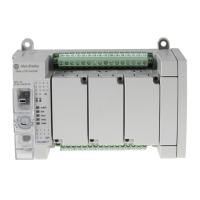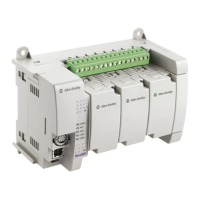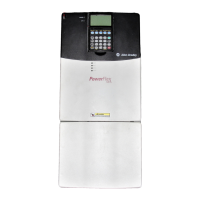1 Publication 1762-RM001C-EN-P
Glossary
The following terms are used throughout this manual. Refer to the
Allen-Bradley Industrial Automation Glossary, Publication Number
AG-7.1, for a complete guide to Allen-Bradley technical terms.
address
A character string that uniquely identifies a memory location. For
example, I:1/0 is the memory address for data located in Input file word
1, bit 0.
AIC+ Advanced Interface Converter
A device that provides RS-232 isolation to an RS-485 Half-Duplex
communication link. (Catalog Number 1761-NET-AIC.)
application
1) A machine or process monitored and controlled by a controller. 2) The
use of computer- or processor-based routines for specific purposes.
ASCII
American Standard Code for Information Interchange. A standard for
defining codes for information exchange between equipment produced
by different manufacturers. The basis of character sets used in most
microcomputers; a string of 7 binary digits represents each character.
baud rate
The speed of communication between devices. Baud rate is typically
displayed in K baud. For example, 19.2K baud = 19,200 bits per second.
bit
The smallest unit of memory used in discrete or binary logic, where the
value 1 represents ON and 0 represents OFF.
block diagrams
A method used to illustrate logic components or a sequence of events.
Boolean operators
Logical operators such as AND, OR, NAND, NOR, NOT, and Exclusive-OR
that can be used singularly or in combination to form logic statements or
circuits. Can have an output response of T or F.
branch
A parallel logic path within a rung of a ladder program. Its primary use is
to build OR logic.
communication scan
A part of the controller’s operating cycle. Communication with devices
(such as other controllers and operator interface devices) takes place
during this period.
control program
User logic (the application) that defines the controller’s operation.

